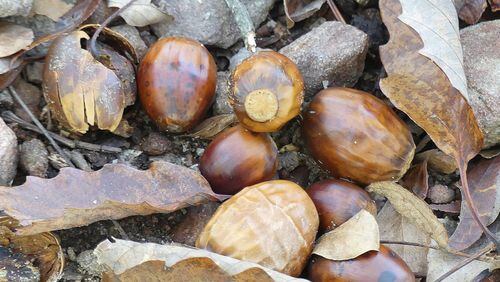Summer’s lush greenery and fall’s spectacular leaf colors are gone, replaced mostly by quiet tones of winter brown. That doesn’t mean, though, that Georgia’s woods, meadows, wetlands and other wild places become dull and boring as winter sets in.
The color isn’t really gone. Brown, for instance, is not as drab as we might think. In winter, there may be as many shades of brown — tan, russet, beige, bronze, wood brown, buff brown, golden brown, umber, amber, taupe, mahogany — as there are green hues in spring.
As you walk in the woods, a park or backyard now, notice the different shades of brown among the fallen leaves, acorns, nuts, pine cones, seeds and other remnants of the growing season. You can see them, too, in the seed heads and dead stems of goldenrods, thistles, asters and other plants that bloomed so colorfully only weeks ago.
And even though brown becomes a dominant color in winter, Georgia’s woods still retain a lot of greenery during the cold season because of pines, hemlocks, hollies, Christmas ferns and other evergreens.
Most of the time, a walk through the woods in winter is about seeing details overlooked in other seasons — such as tree bark, one of the most interesting and beautiful parts of a tree.
An amazing variety of color, texture and patterns are found in tree bark, but in the rich green foliage of summer those features don’t get much notice. In winter, when hardwood trees are dormant and leafless, the bark becomes more prominent and invites us to pay closer attention, especially when the wood is bathed in winter light.
Take time to notice the exfoliating bark of river birch, the corky bark of sweet gum, the alligator-hide bark of dogwood, the smooth bluish-gray bark of American beech, the military-camouflage bark of sycamore, the flaky bark of white oak, the blocky looking bark of persimmon, and on and on.
Also beckoning closer inspection in winter are mosses, lichens and fungi on tree bark and on the forest floor.
IN THE SKY: From David Dundee, Tellus Science Museum astronomer: The moon will be full Sunday — the “Snow Moon,” as the Cherokee peoples called December’s full moon. The only planets visible now are Mars and Jupiter, which are low in the east just before sunrise.
About the Author






